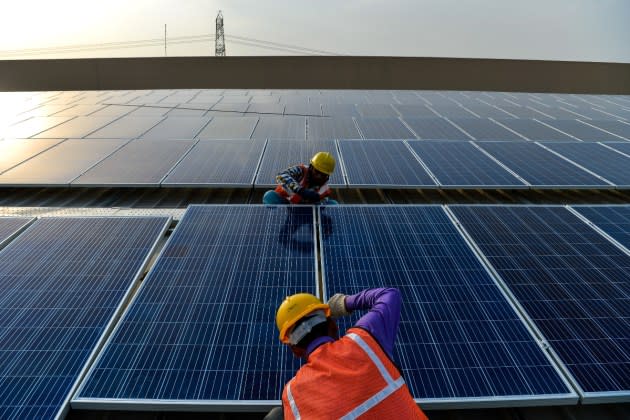How New Maharashtra Textile Policy Brings Energy to the Fore

Capital subsidies for solar project installations for textile manufacturers announced by the central Indian state of Maharashtra, to the tune of up to 48 million rupees ($577,000), are expected the to help the industry battle energy shortages and rising prices.
These will be in effect for the next five years, announced in June as a part of Maharashtra’s Integrated and Sustainable Textile Policy, which runs 2023-2028.
More from Sourcing Journal
This is key as Maharashtra accounts for 12 percent of India’s textile and apparel exports. “Maharashtra comprises a significant chapter in the remarkable growth story of India as a textile’s powerhouse,” according to the new textile policy released in June. “The textile sector plays a crucial role in the state’s economy, being the second-largest employment enabler in Maharashtra, after agriculture. The State accounts for 10.4 percent of the country’s total textile and apparel production and 10.2 percent of the total employment in this sector. Additionally, the State produces 272 million kilograms of yarn, which is 12 percent of India’s gross production.”
However, textile manufacturers reeling under the heavy burden of energy costs complain that the costs are higher than in other Indian states and have crippled 30 percent of the sector.
“Over the last five to seven years, Maharashtra lost its earlier glory because of power costs, losing out to other states,” Prashant Mohota, vice chairman of Mumbai-based Indian Spinners’ Association, told Sourcing Journal. “Many units in Maharashtra had closed down before this policy which ran from 2018-2023, hardly any expansions in the state most was going to other states, all the cotton produced in the state was going outside.”
Several manufacturers said that the industry had been asking for power parity with other states. This was granted in the previous five-year textile policy from 2018-23, with the government providing 2 rupees (approximately 3 cents) per kilowatt of power consumption to establish a level playing field for Maharashtra’s textile players.
Government officials believe the new policy’s focus on solar subsidies in offers a panacea for energy prices and shortages. But textile and yarn manufacturers don’t see it that way. While appreciating that the policy has a good plan for capital support and sustainability targets, with support for zero liquid discharge (ZLD) and the growth of the medium and small sector players, Mohota pointed out that the solar energy subsidies don’t meet the need of the hour.
“Now the government doesn’t have the special funds to continue energy subsidies as before, so they are giving subsidies on solar so that the players can become self-dependent. But if you calculate this it will be way less than 2 rupees. For example, my subsidy will be only 60 paisa or .07 cents. It is now subsidized so that there is no way I can be happy,” Mohota said. “Meanwhile, I will not [be] allowed 100 units from the electricity board, and only 20 percent from solar, because solar has a plant load capacity of 20 percent.”
“We are requesting the government to give more subsidy, or give time,” he said.
As for the support for installation of solar plants- new units/ units undertaking expansion will include the cost of installation of solar power plant in the detailed project report and the capital subsidy will be calculated on the fixed capital investment (eligible plant and machinery and solar plant) up to maximum of 4 MW capacity, the policy noted.
Small and mid-size textile manufacturers lauded the new policy on other counts.
“We would like to see this in the implementation,” said Manoj Joshi, a small manufacturer in Nagpur. “Since the new policy has just come out, we are hoping it can actually meet the targets, especially the target to increase the processing capacity of cotton from 30 percent to 80 percent in the next five years.”
Others hailed the new textile policy as visionary on several counts. For example, the plan targets technological upgrades to promote the textile value chain in the state, aims to attract 250 billion rupees ($3.01 billion) in investment, and wants to generate 500,000 jobs in the next five years.
Additional points in the policy include providing more financial incentives for women empowerment and gender balancing in the textile industry, greater support for increasing skilled labor, as well as a bigger focus on technical textiles, including the development of six technical textile parks in the state by encouraging private investment.
Manufacturers said that they welcomed the focus on ZLD and effluent plants, as mentioned in the new policy, which noted that support for effluent treatment plants and common effluent treatment plants would be 50 percent capital subsidy or 50 million rupees ($600,000), whichever is lower.
As for ZLD, the plan identifies 50 percent of capital subsidy of civil infrastructure, plant and machinery cost, up to a maximum of 100 million rupees ($1.20 million), to set up of ZLD plants inside the textile parks in each of the four zones. The cost of land will not be included in the total project cost.
